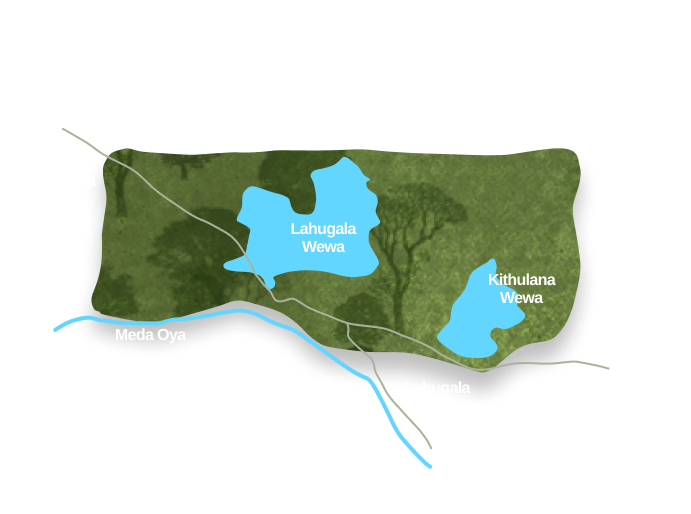In the quiet corners of Sri Lanka’s eastern wilds lies a park small in size, but grand in purpose. Lahugala Kitulana, one of the tiniest national parks on the island, offers a deeply personal experience with Sri Lanka’s iconic elephants. As you follow a narrow trail past shimmering tanks and grasslands humming with birdsong, you enter a world where stillness reveals life, and every moment is a reminder that the wild doesn’t need vastness to be profound.






A Sanctuary of Stillness and Giants
Declared a national park in 1980, Lahugala Kitulana is a haven for elephants who graze on the nutrient-rich Beru grass by the reservoirs. The three ancient tanks Lahugala, Kitulana, and Sengamuwa form the lifeblood of this landscape, eventually joining the Heda Oya river.
Despite its size, the park shelters a surprising array of wildlife. Endemic birds flutter across the canopy while monitor lizards sun themselves by the water’s edge. Mongoose dash through the undergrowth and the occasional deer slips silently into view.
What to Expect in Lahugala Kitulana National Park
Lahugala invites slow exploration. Safaris here move gently across open spaces, where elephants feed in the golden light and birds flit through low trees. You’ll trace quiet trails past tranquil tanks and discover life thriving in subtle patterns, from macaques watching from branches to hornbills calling overhead.
It’s not a park of spectacle, but one of immersion. Come for closeness, for quiet, and for the joy of witnessing wildlife on its own terms, undisturbed, unhurried, and utterly real.